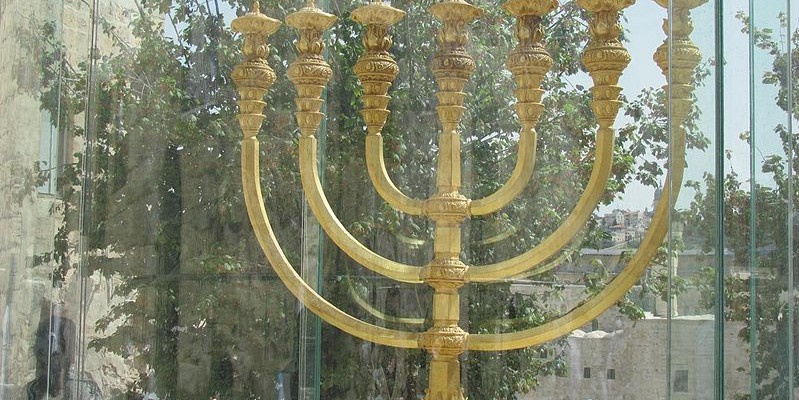Are we and our children “on fire” about being Jewish?
By Rabbi Ari Enkin, Rabbinic Director, United with Israel
This week’s Torah portion is “Behalotecha” (Numbers 8:1-12:16) and it opens with the following verse, “God spoke to Moses saying: Speak to Aaron and say to him: “When you light (“Behalotecha”) the lamps, the seven lamps shall cast their light toward the face of the menorah.”
The word used for “lighting the lamps” is “Behalotecha” which means “to ascend.” The word is said to refer to the fact that a flame expands and flickers upwards as it is brought to a wick when lighting a candle or lamp.
But the question is asked: Why didn’t the Torah just use the normal and expected word of “hadlaka” – which means “to light” a candle. Why are we getting fancy with the wording and using something very unexpected? What does “to ascend” have to do with the menorah lighting ceremony?
It is explained that the word “to ascend” teaches us several points about the menorah lighting ceremony. For example, based on this verse, the priest who lit the menorah in the Holy Temple was required to hold the lighter to the wick until the wick was fully enflamed without fear of it extinguishing. Hence, the flame would fully “ascend” onto the wick before the priest would move the lighter and light the next candle.
Another reason given for referring to the Temple candle lighting with the word “ascend” is to teach us that the priest would literally have to ascend a few steps when lighting the menorah. The menorah was a tad too high for the priest to reach it on his own. As such, there was a step ladder which forced him to “ascend” when he went to light the Menorah.
There is a great lesson in each of these explanations for the use of the word “to ascend”. The menorah represents, among other things, Torah study. There is a tremendous message in education here.
When the teacher teaches his students, the teacher must not move on to the next lesson until the current lesson has been fully understood, until the student “was fully enflamed” by the lesson “without fear of it extinguishing.”
We have to make sure that students are tuned on and “on fire” when they study Torah. Teachers must endeavor to give over their lessons in an exciting and “fiery” manner. This is not always easy, but it is so important, especially when it comes to Jewish education.
And the message of the step stool is similar and perhaps even more important.
Being Jewish, living a Jewish lifestyle, fulfilling all our mitzvot and obligations is not always “within reach.” Sometimes we need a “step stool” to get us where we should be. The “step stool” could be a word of encouragement, some friendly assistance, or inspiration from within.
No less a personality than the priest teaches us that sometimes we have to reach higher, we have to “ascend” past our comfort zone.
The Torah and it’s mitzvot are the “light” of our life. We must make sure that we, and our children, are excited to be Jewish…on fire to be Jewish! And when you reach higher, the flame will ascend on its own!
Do You Love Israel? Make a Donation to Show Your Support!
Donate to vital charities that protect Israelis and help inspire millions around the world to support Israel too!
Now more than ever, Israel needs your help to fight and win the war -- and also the battle of public opinion.
Anti-Israel bias and boycotts are out of control. Israel's enemies effectively use social media to incite brutal terror against innocent Israeli civilians. Please help us fight back!




